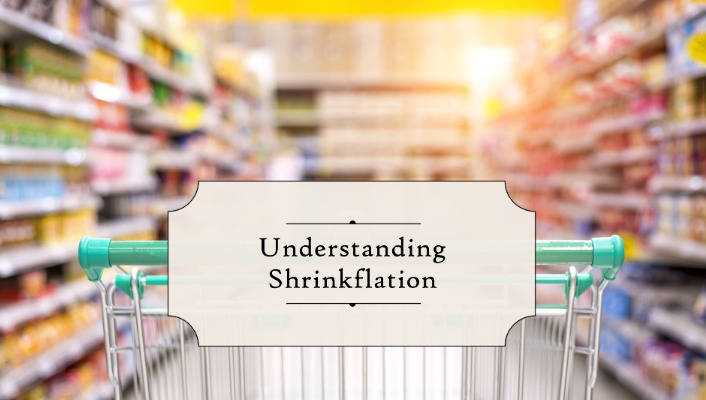
In today’s complex economic landscape, price alone is no longer the sole indicator of product value or market stability. Consumers often focus on price changes when making purchasing decisions however, it is important to consider other factors that may subtly affect the real cost and value of goods and services. One such factor is shrinkflation, a phenomenon often overlooked by consumers yet pervasive in the modern marketplace. Consequently, this article has been developed to shed light on shrinkflation and its broader implications.
Shrinkflation refers to the practice where companies reduce the size, quantity, and or quality of a product while keeping its price unchanged. It is typically a response to companies facing rising production costs, such as increases in raw material prices, labour costs, or disruptions in supply chains. To avoid raising prices outright and deterring customers, companies opt to reduce the size, quantity and or quality of their products. Shrinkflation can be viewed as a covert form of inflation that results in consumers paying the same amount for less, effectively increasing the price per unit or quantity.
Unlike traditional inflation, which is easily noticeable through price tags, shrinkflation is often subtle. For example, a product may remain in a similarly sized package, but the quantity inside decreases. For instance, a bag of chips that once contained 200 grams may now hold only 180 grams, even though its price remains the same.
Though shrinkflation is not illegal since companies display the correct weight, volume, or quantity of their products, the changes are not always obvious to the consumer. This can lead to confusion and mistrust, as shoppers may not realize that they are getting less for the same amount of money.
Identifying shrinkflation can be difficult for the average consumer because it is implemented subtly, but there are strategies to help spot it. First, consumers can compare packaging details, paying attention to changes in weight, volume, or number of units. Additionally, shifts in ingredient composition or noticeable declines in product performance can indicate shrinkflation. These indicators are subtle but crucial in helping consumers avoid paying for less product.
The effects of shrinkflation are generally negative for consumers, with the most prominent impact being a reduction in value for money. Consumers are essentially paying more per unit without receiving any additional benefit. This can lead to frustration and a loss of trust in brands that are perceived as being deceptive, especially if companies do not clearly communicate the changes. Additionally, shrinkflation complicates price comparisons between brands, as the unit size or quality may differ significantly making it difficult to gauge which product offers the best value. A major concern is the impact on consumers’ purchasing power. During periods of shrinkflation, nominal wages often fail to keep pace with the increasing cost per unit of goods. For lower-income households, this loss of purchasing power can be felt even more acutely, exacerbating income inequality.
For businesses, shrinkflation can be both a strategic and risky move. On one hand, it can allow companies to preserve profit margins without risking the potential consumer backlash of direct price increases. Likewise, it can allow companies to remain competitive in the marketplace, where visibly raising prices might lead to a loss of market share. On the other hand, if consumers notice the changes, they may react negatively, resulting in a loss of brand loyalty and market share or even a public relations crisis.
The implications of shrinkflation extend beyond individual purchasing decisions. It has implications for the economy and markets. It can create a false sense of stability in inflation measures, as inflation indices like the Consumer Price Index (CPI) may not fully account for reductions in product size or quality. This underestimation could obscure the true inflationary pressures consumers face, leading policymakers to underestimate inflation’s impact on households.
Additionally, shrinkflation can prompt shifts in consumer preferences. As consumers become aware of reduced product sizes or quality, they may gravitate toward alternative brands that offer better value for money. This can alter market dynamics. Moreover, income inequality may also deepen as lower-income households, already sensitive to price changes, bear the brunt of shrinkflation. These households often rely on budget shopping, and even small reductions in product size can strain their finances.
Countries around the world have taken measures to address the issue. France and Hungary, for example, have introduced regulations requiring companies to disclose any reductions in product size without corresponding price cuts. In Brazil, labelling regulations now force manufacturers to clearly highlight when a product’s weight or volume has been reduced. Romania has implemented similar rules, mandating businesses to display the price per reference unit, ensuring consumers are aware of the real cost increase.
In the U.S., consumers have responded by filing class-action lawsuits against companies, arguing that shrinkflation amounts to deceptive marketing practices.
While price is often the most visible factor in purchasing decisions, it’s not the only one that should be considered. Shrinkflation presents a subtle form of inflation that affects both consumers and the broader economy. To mitigate its impact, governments could consider mandatory disclosure requirements that compel companies to be transparent about size reductions if prices remain unchanged. Enhanced consumer education campaigns could also empower individuals to identify shrinkflation and make more informed purchasing decisions.
